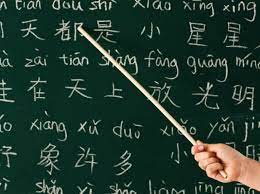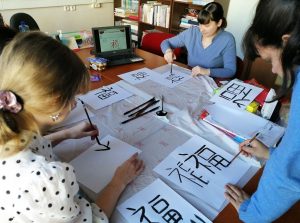How to learn Chinese on your own
Features of the Chinese language
Pronunciation and writing. By the appearance of the hieroglyph, it is impossible to determine its pronunciation. Therefore, the sound and writing in Chinese are two different worlds. You can speak fluently on everyday topics, but still not be able to write and read.
Lots of dialects.
In fact, Chinese is not one language, but a whole group. Usually they are called dialects, but many of them are so far apart that they are more like separate languages: a speaker of a northern dialect will not understand a speaker of a southern one. In China, as well as in Singapore and Taiwan, Putonghua, or Mandarin in English, is recognized as official. It is spoken by the majority of the Chinese population – 65%. In total, there are 10 large groups of languages in the PRC, which in total give 266 dialects. At the same time, different dialects use the same script. Therefore, even if their carriers do not understand each other verbally, they will be able to explain themselves with paper and pen.
Hieroglyphs.
The Chinese language is famous for its complex hieroglyphic writing. The difference between a hieroglyph and a letter is that the letter refers only to sound, and the hieroglyph refers to sound and meaning. The simplest hieroglyphs are called pictographic. These are schematic drawings of objects of the surrounding world. But more complex signs have nothing to do with the appearance of what they stand for. Such hieroglyphs as a constructor are made up of constituent parts – graphemes. It is easy to memorize the entire character from them. For fluency in the language, it is enough to know 3000-3500 hieroglyphs. In this case, the word sometimes consists of several characters. Therefore, having learned 3000 characters, you can make several times more words out of them.
Tones.
One of the main difficulties for all beginners to learn Chinese is tones. You may have already heard horror stories about the fact that “without an absolute ear for music, you won’t be able to learn Chinese.” This is absolutely not the case – tones are available to any person. Each character represents a syllable, and tone is the change in pitch within a syllable. There are four of them in total, plus one neutral one, which sounds muffled, and the pitch of the voice does not change. Knowing tones is important because they affect the meaning of a word. The syllable ma, depending on the tone, can mean “mother”, “horse”, “hemp” and the verb “scold”.
Transcription.
Chinese words can be written not only in hieroglyphs, but also in Latin letters. For this, there is a special transcription system – pinyin (pīnyīn). It also reflects the tones of syllables, so at the initial stage it will greatly facilitate the study of the language.
Lots of similar words.
In Chinese, many words sound the same but are written with different characters. For example, 177 hieroglyphs carry yi readings without taking into account tones. This phenomenon is called homophony. To illustrate it, the Chinese-American linguist Zhao Yuanren wrote the poem Shī Shì shí shī shǐ, consisting only of the syllables “shi”. You can listen to it here.
Simplified and traditional writing.
Modern Chinese writing has two variants – simplified and traditional. Simplified hieroglyphs consist of fewer strokes. They were introduced in the 1950s in the PRC to raise the level of literacy. Simplified writing is also used in Singapore and Malaysia. Traditional hieroglyphs are more difficult. They are still written in Hong Kong, Macau and Taiwan. At the same time, it cannot be said that if you learn traditional hieroglyphs, you will automatically know the simplified versions. They are quite different and not always similar to each other: 遠 → 远 (yuǎn – “far”), 後 → 后 (hòu – “after”), 國 → 国 (guó – “country”)
Grammar.
Basic Chinese grammar is quite simple. Parts of speech do not change, nouns do not have cases and genders, and verbs do not have tenses. Therefore, you do not have to suffer with approvals. The main thing to master is the word order in a sentence. Everything rests on it.
The Chinese language is intimidating in its complexity. It seems to many that only superhumans with some special and mysterious “talent for languages” can learn it. It is not true. It is possible to learn Chinese, but it is really much more difficult than English. And a lot depends on the goal.
If you want to work professionally with the Chinese language, it is better to immediately find a teacher or sign up for courses. But the level of “survival” is quite achievable with independent studies. In this case, you should concentrate on colloquial phrases – writing will not be so useful. But in order to conduct business correspondence with business partners, the skill of speech perception, on the contrary, is not so important. Below we give tips on how to fully master the language. First of all, a few basic rules:
- Get busy every day. This is critical. Without daily practice, knowledge will leak out of your head like water through a sieve. Therefore, 20 minutes every day is better than a five-hour marathon on Sunday.
Make a class schedule. In the absence of a teacher, it is difficult to control oneself. When difficulties begin (and they will), you will want to postpone the lesson for the evening, for tomorrow, for the next week – for later. Unfortunately, “later” may never come. To avoid this, box yourself in. Make a schedule and stick to it. It will help you separate your studies from the rest of your life and make classes a special ritual. - Don’t be afraid of difficulties. When you first start learning Chinese, you have to learn a lot of new information: unusual sounds, tones, characters, keys. But then the core of knowledge will grow faster and faster – like a snowball rolling down a mountain. It will become easier for you to memorize new characters when you understand what they consist of. And with the perception of speech there will be no problems when you master the tones and vocabulary. So the efforts at the initial stage will pay off handsomely.
- Love Chinese. The best motivation for learning a language is sincere interest. With it, you will not have to force yourself to study, and you will learn new words and hieroglyphs not only from textbooks, but from a variety of sources. So if you started learning Chinese not out of love for the language or culture itself, but for practical reasons, try watching TV shows, listening to Chinese music, reading literature. In general, find something that will hook you.
- And the last. Unfortunately, there are very few good materials on Chinese in Russian. Without knowledge of English, it will be much more difficult to master Mandarin, especially on your own. So if Chinese is your first foreign language, you should consider starting with something easier and more practical.
Pinyin – Chinese transcription
Pinyin (pīnyīn) is the official phonetic system used to record the reading of Chinese characters. She uses Latin letters, so mastering her will not be a problem. This must be done first of all. Pinyin will help you figure out what sounds are generally used in Chinese and how to pronounce them correctly. This is the most fundamental skill for mastering a language.
Master the theory first. In Chinese, it is customary to divide sounds not into consonants and vowels, but into initials and finals. The initial is the sound with which the syllable begins, the final is the sound with which it ends. There are 21 initials and 34 finals in Chinese. In total, they give about 400 combinations. In addition, in pinyin, many characters are read differently than we are used to. Especially difficult for beginners is zh, ch, j.
Once you master pinyin, you can type in Chinese on your computer. This is done very simply – enter the reading of the character in Latin, and then select the one you need from the list that appears (many characters have the same reading). So once you learn Pinyin, you can use the dictionary and even communicate with Chinese.
